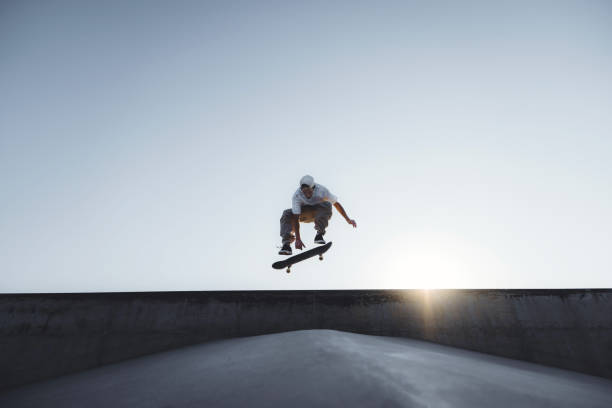Breaking Down the Biomechanics of Skateboarding: An In-Depth Analysis
Skateboarding, a sport that was once associated with rebellious youth culture, has gained global recognition and acceptance, culminating in its inclusion in the 2020 Tokyo Olympics. Yet, despite its rise to mainstream sports, the biomechanics of skateboarding - the science that makes those impressive flips, jumps, and slides possible - remains a mystery to most. This article delves into the fascinating world of skateboarding biomechanics, exploring the interplay of physics, human physiology, and skill that make this dynamic sport possible.

A Glimpse into the History of Skateboarding
Skateboarding began its journey in the 1950s in California, as surfers sought a way to practice their skills when the waves were lackluster. Initially, it was simply a matter of attaching roller skate wheels to wooden boards. Over the years, however, the sport evolved dramatically, with technological advancements in board design and construction significantly enhancing performance capabilities.
Delving into Skateboarding Biomechanics
The art of skateboarding involves a complex combination of balance, timing, strength, and precision, all underpinned by the principles of physics. For instance, the ollie, a fundamental skateboarding trick involving a leap into the air without the rider’s hands touching the board, is essentially an exercise in applied physics. It requires a complex interplay of force application, center of mass manipulation, and angular momentum conservation.
The Role of Human Physiology in Skateboarding
Skateboarding is not just about physics; it’s also about physiology. The sport demands a high level of physical fitness, including strength, endurance, balance, and flexibility. Moreover, skateboarding involves nearly all of the body’s major muscle groups, from the legs that generate force for jumps and tricks to the core muscles that provide balance and stability.
Challenges and Real-World Applications of Skateboarding Biomechanics
While understanding and applying skateboarding biomechanics can significantly improve performance, it is not without challenges. The complexity of the movements and the high risk of injury require careful practice and conditioning. However, the real-world applications of these principles extend beyond the skate park. For instance, the understanding of forces and momentum gained through skateboarding can be beneficial in various other sports and physical activities.
Concluding Thoughts: The Future of Skateboarding Biomechanics
As skateboarding continues to grow in popularity, so too will our understanding of its underlying biomechanics. Future research may shed light on how to enhance performance, reduce injury risk, and perhaps even influence the design of skateboarding equipment. It’s clear that the science of skateboarding biomechanics holds much potential for this dynamic and evolving sport.
When viewed through the lens of science, skateboarding is more than just a sport; it’s a fascinating study of physics and human capabilities in action. So, the next time you watch a skateboarder perform a seemingly impossible trick, you’ll appreciate the complex interplay of forces that makes it possible.





